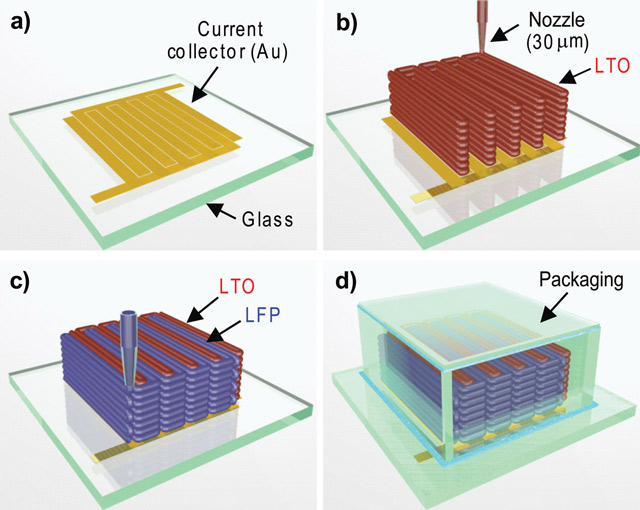3D printing of tiny Li-Ion batteries

Engineers from Harvard and the University of Illinois at Urbana-Champaign were able to produce lithium-ion batteries less than 1 millimeter thick. Lithium iron phosphate cathodes LiFePO 4 (LFP) and lithium titanate anodes Li 4 Ti 5 O 12 (LTO) are printed in layers on a 3D printer.

To obtain a printing material that would have a viscosity similar to toothpaste and instantly solidify in air, LTO and LFP nanoparticles were used and mixed into a viscous solution.

The video shows the process of printing lithium titanate layers with a printhead with a 30 micron nozzle, at a pressure of 105 psi (724 Pa), at a speed of 1 millimeter per second.
It is assumed that millimeter batteries will find application in miniature electronics, MEMS devices. The photo shows a prototype of a finished battery, filled with electrolyte and placed in a plastic case.

The manufacture of electrodes by 3D printing can increase the specific power and energy density of nanobatteries. On the graph - a comparison of the characteristics of 3D-IMA with other experimental technologies for the manufacture of nanoaccumulators in specific power and energy density.

The scientific work “3D Printing of Comb Architecture of Lithium-Ion Microbattery” (“3D Printing of Interdigitated Li-Ion Microbattery Architectures”) was published in the journal Advanced Materials on June 17, 2013, DOI: 10.1002 / adma.201301036, pdf .
